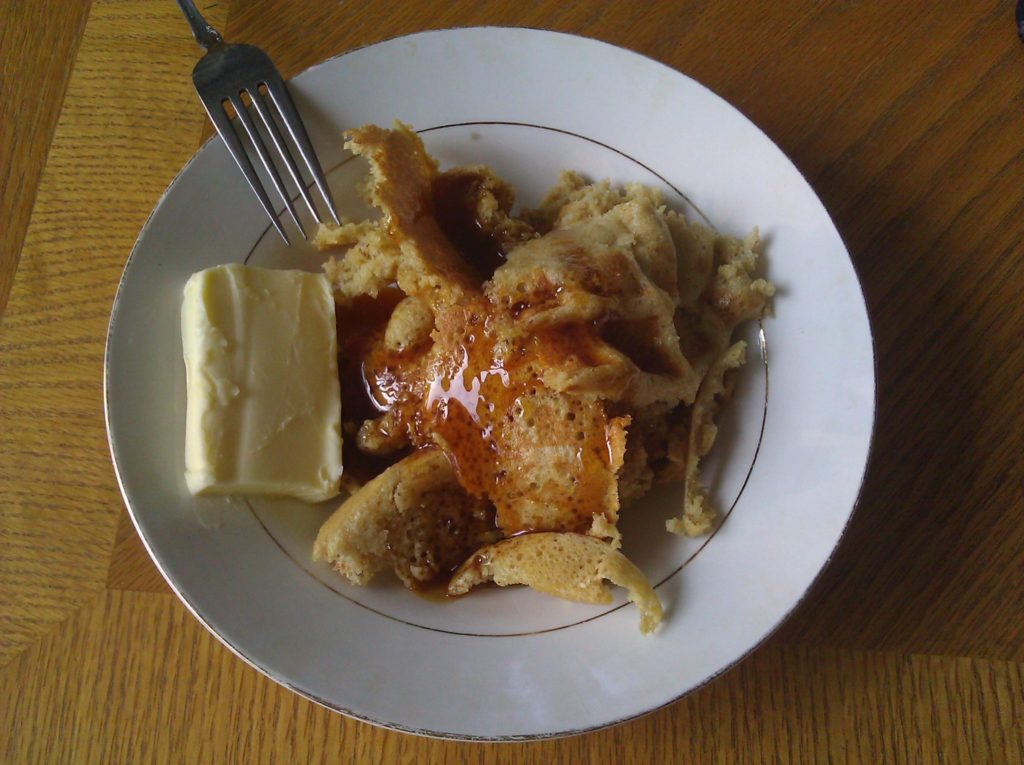
Delving into Traditional Eating for the first time inevitably uncovers the fact that modern methods for preparing grains and legumes can be extremely damaging to health over the long term particularly if numerous servings of these foods are consumed on a daily basis as recommended by conventional dietitians and nutritionists.
Even if you take the time and care to make your own bread at home with freshly ground grain, if you do not follow the centuries-old traditions for eliminating anti-nutrients and maximizing the nutrition in the grain prior to baking, you could, in fact, be doing yourself and your family more harm than good.
In the video below which I filmed as part of a Beginner Video Series for the Weston A. Price Foundation, I show you the basics for soaking grains and legumes so that you can enjoy these wonderful foods in your home and experience health benefits from doing so rather than health depletion.
Following these guidelines makes food more digestible and more nutritious as vitamins and minerals become more bioavailable.
As a huge bonus, preparing grains properly results in more satisfaction per bite. This translates into easier portion control which makes eating less and losing weight more attainable.
For a complete transcript of this video which is translatable into any language, click here.
Soaking Grains and Legumes Video How-To
This lesson describes the very important traditional practice of soaking legumes and grains. Note that in the past few years, the use of chickpea cooking water, called aquafaba, has become popular in vegan circles.
Note that while legumes are a traditional food, using the cooking water as an egg replacement is not. In fact, it is quite dangerous to gut health as it is loaded with anti-nutrients.
So enjoy your legumes and grains, but be sure to toss the soaking and cooking water!
More Information on Soaking
These articles contain more information on soaking once you get the hang of grains:
- How to soak raw nuts
- Soaking raw seeds
- How to soak beans before cooking
- Soaked lentils
- Does white rice need soaking?








Hi,
I tried the recipe for soaked oats from your video on the Weston Price website last night. I soaked the oats with equal parts water and 2 TBS Bragg apple cider vinegar. The video instructions said to just add one cup of water in the morning and cook with a bit of sea salt. These oats aren’t bad (added maple syrup and butter) but do taste a little tangy from the vinegar. Would it be wrong to drain off any water from the night before and add a bit of extra fresh water in the morning to reduce the acidic taste? I guess I can also try buttermilk or yogurt but think that might also contribute a sour note to the oats which I’m not a big fan of. Thanks!
Phytic acid is water soluble, which is why soaking in water is the way to go. My QUESTION is why not drain, rinse, and add fresh water to the oatmeal/grain after soaking. Seems like you would really want to wash away whatever you soaked out of it, right?
Great video. I am a WAP member too trying to learn how to do this. Thanks.
Question:
How does the ratio go when you increase the serving size. For example, I use 10 cups of oatmeal. Do I use 2 tablespoons or 20 tablespoons of vinegar/lemon juice/etc.? Also, when I add the additional water before cooking, I am guessing that is only 1 cup versus 10 cups?
Keep up the awesome videos. They are VERY helpful.
Robert
I have tried many recipes for sprouted wheat flour bread and have yet to come across one that is not as dense as a brick. I know I have read that you buy your bread, but do you by chance have a recipe I could try?
If I make my pancake batter ahead of time and let it sit for a day before using it, does this have the same effect as soaking the flour by itself prior to adding the other ingredients??
Hi Sarah,
Where do you get your grain from? Is there an online distributor you can recommend? Thanks, Caitlin
Hi Caitlin, don’t mean to reply in place of Sarah but I know the Weston Price foundation sells a shopping guide with that type of info in it:-). I also know you can grind your own grain with a flour mill.
Thanks for this video. I really want to get better with soaking my grains, however I have found it intimidating. Can you tell me is there a general ratio as far as how much water to use along with an acidic medium for whatever it is that you are soaking? It seemed like you did 1 cup water for 1 cup rolled oats and 2 tablespoons acidic medium. But them for the pancakes you used 2 cups water and still 2 tablespoons of vinegar for the 2 cups flour. Is there a rule of thumb that helps you gage how much water and how much acidic medium to use depending on the amount that is being soaked? Thanks!
Great video! I have been cooking from NT for a while, though not exclusively, and love the way you have put the information together in this video. Thank you.
Sarah, do gluten free grains such as Sorghum need to be soaked?
Yes, soaking is not just for gluten. There are other anti-nutrients primarily the phytates that need to be inactivated by soaking.